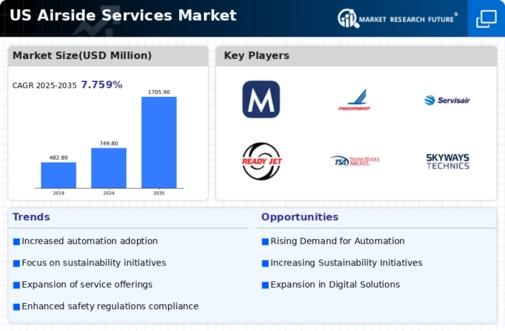US Airside Services Market Summary
The US Airside Services market is projected to grow significantly, reaching 1705.9 USD Million by 2035.
Key Market Trends & Highlights
US Airside Services Key Trends and Highlights
- The market valuation is estimated at 749.8 USD Million in 2024.
- From 2025 to 2035, the market is expected to grow at a CAGR of 7.76%.
- By 2035, the market is anticipated to reach a value of 1705.9 USD Million.
- Growing adoption of advanced technologies due to increasing safety regulations is a major market driver.
Market Size & Forecast
| 2024 Market Size | 749.8 (USD Million) |
| 2035 Market Size | 1705.9 (USD Million) |
| CAGR (2025-2035) | 7.76% |
Major Players
Gateway Airport Services, SATS Ltd, Menzies Aviation, Swissport International, Piedmont Airlines, Servisair, BBA Aviation, ready Jet, AeroGround, Trans States Airlines, Skyways, Signature Flight Support, Dnata, Air General



















